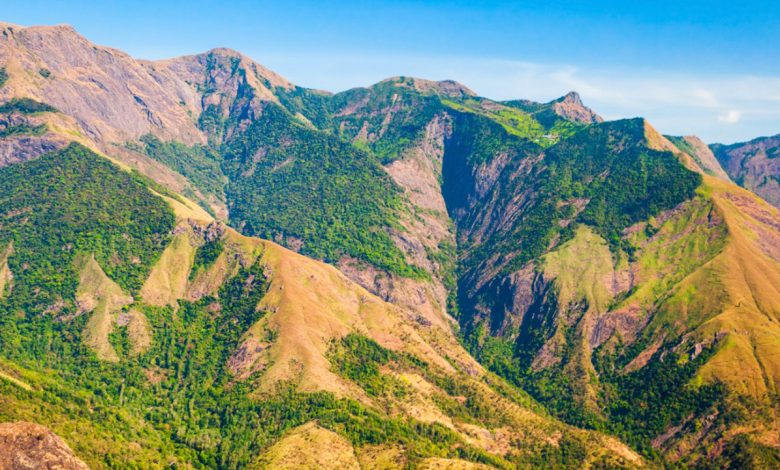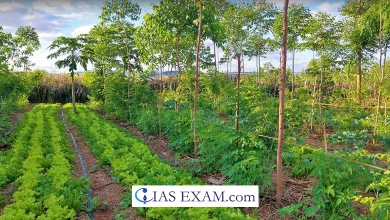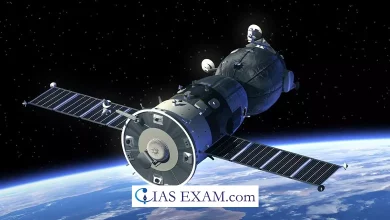Daily Current Affairs for UPSC
Protection of the Western Ghats
Syllabus- Indian Geography [GS Paper-1]

Context- The Supreme Court recently instructed the Environment Ministry to submit its counter-affidavit to a petition requesting judicial intervention to prevent the destruction of the Western Ghats.
Key Highlights-
- From the river Tapi in the north to Kanyakumari in the south, the Western Ghats are a 1600-kilometer mountain chain along India’s west coast.
- They travel through Goa, Karnataka, Kerala, Tamil Nadu, Gujarat, Maharashtra, and Goa. They are referred to as Sahyadris, Nilgiris, and other regional names.
- Due to the windward effect, the western side of the Western Ghat receives more precipitation than the eastern side, resulting in a humid, tropical climate.
- The United Nations Education, Scientific, and Cultural Organization (UNESCO) designated Western Ghats as a world heritage site in 2012.
Significance
- The three major rivers that flow eastward in peninsular India—Godavari, Krishna, and Kaveri—all get their water from the Western Ghats. The majority of India’s water comes from rivers that originate in the Western Ghats, which are found on the peninsula.
- The Indian monsoon weather patterns are influenced by the Western Ghats, which are the cause of heavy rainfall along the western coast.
- The forest ecosystems of the Western Ghats store a significant amount of carbon. It is assessed that they kill around 4 million tons of carbon consistently around 10% of discharges killed by every single Indian backwoods
- Western Ghats are one of the eight biodiversity problem areas of the world.
- Endemism in both plants and animals is particularly high in the Western Ghats. 52% of tree species and 65% of amphibians found in the western Ghats are thought to be endemic.
Threats
- Mining-based threats: The mining industry has expanded rapidly and frequently in violation of all laws, causing serious harm to the environment and social disruption.
- The livelihoods of the people who live in those areas have been negatively impacted by unsustainable mining, which has made them more susceptible to landslides, harmed agriculture, and damaged water sources.
- Extracting Forest Produce: Human people group living inside and contiguous safeguarded regions in the Western Ghats are in many cases subject to it for extraction of timberland produce to meet a variety of means and business needs.
- Grazing of Animals: The Western Ghats’ habitat is being destroyed as a result of livestock grazing within and adjacent to protected areas.
- Plantations: Agroforestry frameworks in the Western Ghats are supplanting local endemic species with tea, espresso, elastic and monocultures of different species, including the as of late presented oil palm.
- Infringement by Human Settlements: In and out of protected areas throughout the Western Ghats, human settlements pose a significant threat.
- Projects Using Hydropower: The Western Ghats’ large dam projects have incurred significant costs for the environment.
Recommendations
- The Gadgil Committee’s 2011 Report on Committees and Recommendations
-
-
- The Western Ghats Ecology Expert Panel (WGEEP), led by Prof. Madhav Gadgil as chairman, was established in 2010 by the Ministry of Environment and Forests to primarily demarcate ecologically sensitive areas in the Western Ghats and make recommendations for their management.
- The committee established the Western Ghats’ boundaries for ecological management purposes.
- It suggested that this entire region be labeled an ecologically sensitive area (ESA), and that smaller parts of the region be labeled ecologically sensitive zones (ESZ) I, II, or III based on their current state and the nature of the threat they pose.
- It proposed to partition the region into around 2,200 frameworks, of which 75% would fall under ESZ I or II or under previously existing safeguarded regions like untamed life asylums or normal parks.
- To oversee these activities in the region, the committee suggested establishing a Western Ghats Ecology Authority.
- The Gadgil Committee’s recommendations were not supported by any of the six concerned states.
-
- Kasturirangan Committee,2012
-
-
- The Environment Ministry then set up a High-Level Working Group on the Western Ghats under Kasturirangan to “examine” the Gadgil Committee report in light of “responses received” from states, central ministries, and others in a “holistic and multidisciplinary manner.”
-
- Recommendations:
-
-
- Only 37% of the Western Ghats were to be included in the Kasturirangan report’s Ecologically Sensitive Area (ESA) zones.
- It distinguished between cultural landscapes (of which human settlements, agricultural fields, and plantations account for 58% in the Western Ghats) and natural landscapes (of which 90% should fall under ESA, according to the committee).
- a prohibition on sand mining, quarrying, and mining.
- Hydropower projects are permitted with some restrictions, but there are no new thermal power projects.
- a ban on new industries that pollute.
- Townships were outlawed, but building and construction projects up to 20,000 square meters were allowed.
- With additional safeguards, forest diversion may be permitted.
- In accordance with the Environment Protection Act of 1986, the Environment Ministry decided to implement the Kasturirangan Committee report on the Western Ghats and declared ESA over 37% of the Western Ghats.
-
Way Forward
- It is necessary to strike a balance between conservation efforts and development by controlling human behaviors that support livelihoods but hinder biodiversity conservation.





.png)



